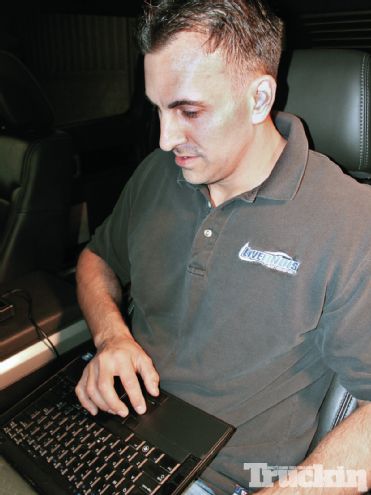
| ford F 150 tire Smoke
With about 40 percent of the Ford F-150's sales these days coming from EcoBoost-powered models, it's safe to say the Blue Oval boys have struck a chord with truck customers. Hard-core performance enthusiasts, however, may not be ready to swap their V-8 for a twin-turbo V-6. This story might just make a few converts out of the faithful, much like the Buick Grand National did with the old-school muscle car crowd back in the '80s.
Let's do a quick comparison of the 3.5L EcoBoost and the F-150's 5.0L naturally aspirated V-8: The 5.0L is rated at 360 hp at 5,500 rpm, while the EcoBoost is rated at 365 hp at 5,000 rpm. Five horsepower doesn't sound like much in a 5,500-plus-pound truck, but then there's the torque. The 5.0L is good for 380 lb-ft at 4,250 rpm, while the EcoBoost cranks out an impressive 420 lb-ft at a super-low 2,500 rpm—and under boost the peak torque remains flat across the rpm range. Still not convinced? There's also a weight advantage of roughly 20 pounds over a comparable 5.0L-equipped truck.
More power, especially torque, in a lighter package makes it hard not to like, right? We're definitely on board with the EcoBoost, but as card-carrying members of that fraternity of performance enthusiasts, we cannot help but scratch deeper to see if even more power can be coaxed from the as-delivered powertrain. And just about the time that "more power" itch was starting to bug us, Livernois Motorsports came along with a carbon-fiber, liquid-cooled backscratcher.
Dan Millen, the head honcho at the Dearborn Heights–based tuning shop, was already experimenting with a couple of EcoBoost trucks and we asked about his results. "Surprising," he told us. "With nothing more than an easily uploadable tune, we picked up about 60 rear-wheel horsepower and a stunning 80 lb-ft of torque."
That sent the output of the EcoBoost well into the 400hp range, surpassing even Ford's biggest truck V-8, the 6.2L and its 411 hp and 438 lb-ft ratings. Along with fuel mapping changes, requiring premium fuel, Millen's electronic tweaks firmed up the shifting, and he removed the speed limiter. We asked about other changes beyond the controller, such as the exhaust system. "Don't know," Millen told us. "Get us one and we'll find out."
That's exactly what we did, ordering a new after-cat system from CORSA Performance. We liked what we saw when we opened the box, too. Even if the exhaust system didn't uncork a zillion pent-up ponies, its twin, polished stainless tips certainly looked richer than the bargain-rack stock exhaust outlet. At about $900 for the complete system, it wasn't the most inexpensive bolt-on we ever added, but on the street, image counts for a lot —and this system has it. It performed, too, adding about 12 hp and 11 lb-ft over stock. Indeed, the CORSA exhaust was a definite contributor to the performance of our SuperCrew test vehicle, and the exhaust sounded great, making the V-6 ultra-quiet on the highway, yet with a Power Stroke-like rumble when accelerating.
What makes this experiment even more impressive is the ease in which it can be duplicated. Livernois sells the tune on a preloaded programmer and the CORSA exhaust is easily installed at home, although a lift sure makes the job easier. When you consider a supercharger might cost thousands to buy and install for a 100hp gain, for the roughly $1,950 this package cost (programmer/tune, exhaust system and installation), the bang-for-the-buck quotient just blew the bell curve. Millen tells us his guys are already working on performance packages for the EcoBoost that involve more than the basic exhaust and tune, but for now, we're thrilled with the return on investment for this simple pair of upgrades.
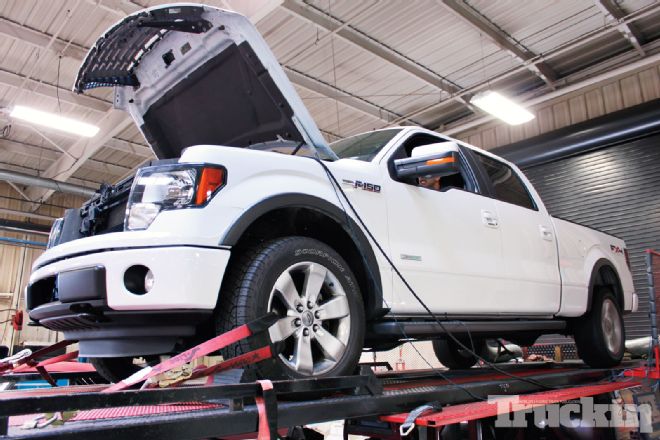
| 13. Back on the chassis dyno, the Livernois tune and the CORSA exhaust combined for a best 372.98-rwhp output, with 427.14 lb-ft of torque. That's a 25 percent gain in horsepower and 21 percent more torque, when compared to the stock configuration of our SuperCrew 4x4 project vehicle. For the money—just under $2,000, including installation charges—the package represents great bang for the buck.
Dyno Results*
RWHP
RWTQ
Stock tune and exhaust
300.45
353.96
Stock tune with CORSA exhaust
312.58
366.56
Livernois Motorsports tune with stock exhaust
361.43
430.10
Livernois Motorsports tune with CORSA exhaust
372.98
427.14
DynoJet chassis dyno with SAE correction factory
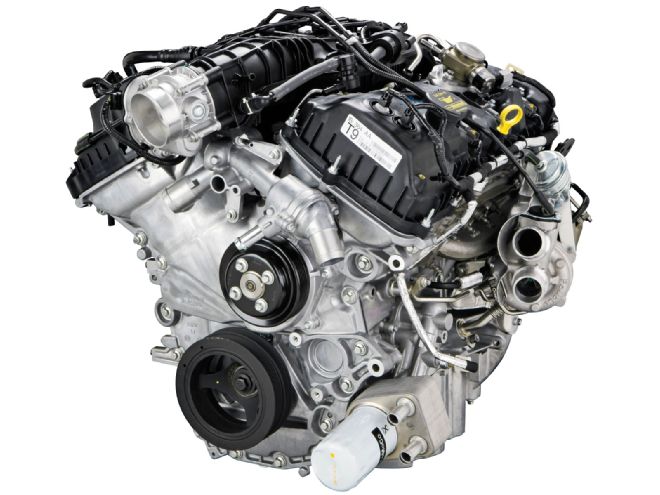
| ford F 150 engine
Turbocharger Tech
Why two small turbos are better than a single large one – sometimes
The Ford 3.5L EcoBoost is a twin-turbo engine, with the pair of turbochargers helping the engine deliver its 365hp rating and 420 lb-ft of torque. That's more than 100 horses per liter or, more specifically 1.7 horses for every one of the engine's 214 cubic inches. In an age where one horsepower per cube is still noteworthy, the EcoBoost's pressurized performance is unquestionably admirable, but its torque is the truly impressive trait.
The EcoBoost's peak 420 lb-ft is achieved by only 2,500 rpm, whereas Ford's 5.0L and 6.2L naturally aspirated V-8s need to reach at least 4,000 rpm to reach their peak torque (4,250 rpm for the 5.0L). You have to look at the monster Power Stroke diesel for an engine in Ford's truck lineup that makes its peak torque at a lower engine speed: 800 lb-ft at 1,600 rpm. Even more important than the low engine speed at which the EcoBoost torque peak is achieved is the fact that it holds it over a broad rpm range. Ford says 90 percent is sustained from 1,700 rpm to 5,000 rpm. That's pretty consistent with the general performance of most turbocharged engines.
One of the biggest reasons the EcoBoost achieves its maximum torque so low in the rpm range is its use of a pair of comparatively small Garrett (Honeywell) GT15 water-cooled turbochargers rather than a single, larger turbo. Smaller turbos generally "spool"—get up to boost-producing speed—quicker than larger turbos, which helps the engine make more power faster. The Honeywells can spin up to 170,000 rpm.
It's generally true that a larger turbocharger will make more maximum boost and consequently more horsepower in the engine, but because the spool time may be longer, that extra power – and torque – will come higher in the rpm band. That's fine for, say, a lightweight drag racer that doesn't need maximum torque at the starting line, but for a heavy, production pickup truck that needs low-rpm grunt, a larger single turbo with a
longer spool time wouldn't achieve the down-low torque output like a pair of smaller turbos.
The EcoBoost makes boost almost immediately off idle, giving the F-150 a strong feeling of acceleration. It's a textbook example of bigger not always being better.
 | ford F 150 tire Smoke
With about 40 percent of the Ford F-150's sales these days coming from EcoBoost-powered models, it's safe to say the Blue Oval boys have struck a chord with truck customers. Hard-core performance enthusiasts, however, may not be ready to swap their V-8 for a twin-turbo V-6. This story might just make a few converts out of the faithful, much like the Buick Grand National did with the old-school muscle car crowd back in the '80s.
Let's do a quick comparison of the 3.5L EcoBoost and the F-150's 5.0L naturally aspirated V-8: The 5.0L is rated at 360 hp at 5,500 rpm, while the EcoBoost is rated at 365 hp at 5,000 rpm. Five horsepower doesn't sound like much in a 5,500-plus-pound truck, but then there's the torque. The 5.0L is good for 380 lb-ft at 4,250 rpm, while the EcoBoost cranks out an impressive 420 lb-ft at a super-low 2,500 rpm—and under boost the peak torque remains flat across the rpm range. Still not convinced? There's also a weight advantage of roughly 20 pounds over a comparable 5.0L-equipped truck.
| ford F 150 tire Smoke
With about 40 percent of the Ford F-150's sales these days coming from EcoBoost-powered models, it's safe to say the Blue Oval boys have struck a chord with truck customers. Hard-core performance enthusiasts, however, may not be ready to swap their V-8 for a twin-turbo V-6. This story might just make a few converts out of the faithful, much like the Buick Grand National did with the old-school muscle car crowd back in the '80s.
Let's do a quick comparison of the 3.5L EcoBoost and the F-150's 5.0L naturally aspirated V-8: The 5.0L is rated at 360 hp at 5,500 rpm, while the EcoBoost is rated at 365 hp at 5,000 rpm. Five horsepower doesn't sound like much in a 5,500-plus-pound truck, but then there's the torque. The 5.0L is good for 380 lb-ft at 4,250 rpm, while the EcoBoost cranks out an impressive 420 lb-ft at a super-low 2,500 rpm—and under boost the peak torque remains flat across the rpm range. Still not convinced? There's also a weight advantage of roughly 20 pounds over a comparable 5.0L-equipped truck.
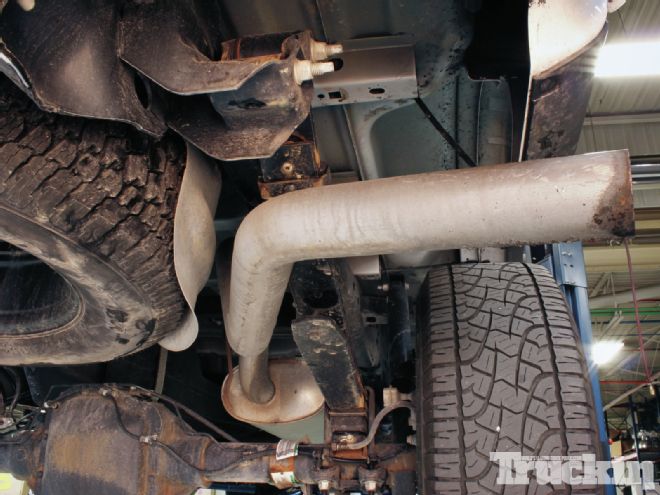
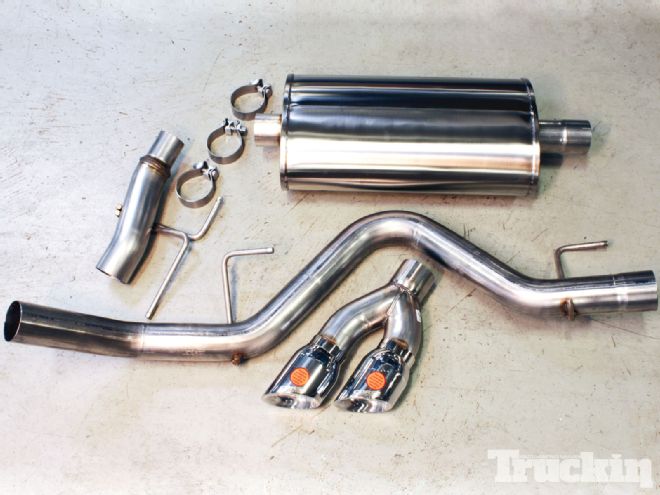
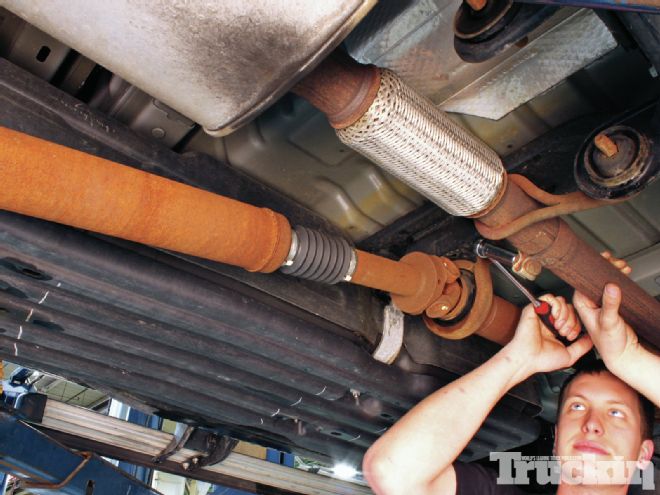
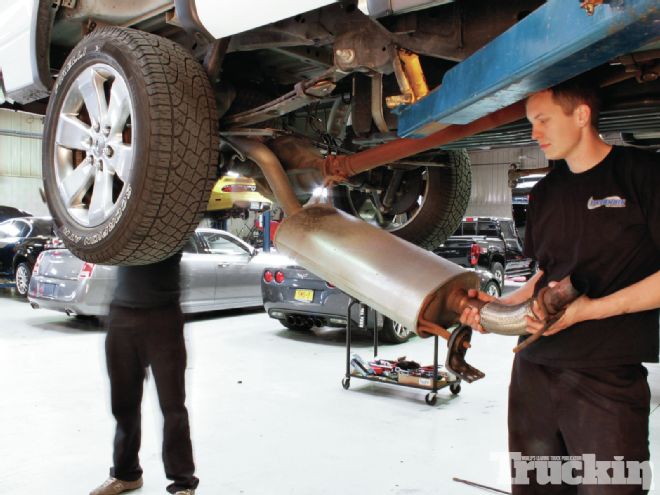
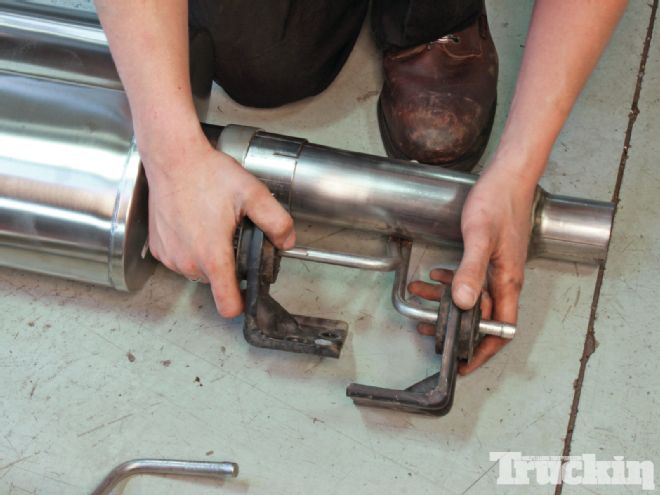
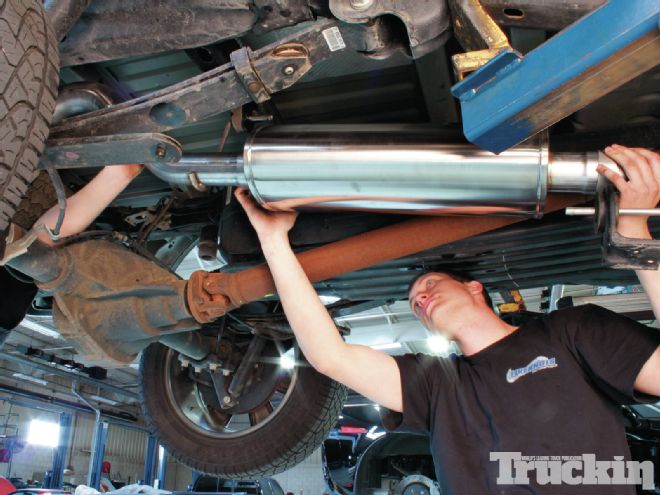
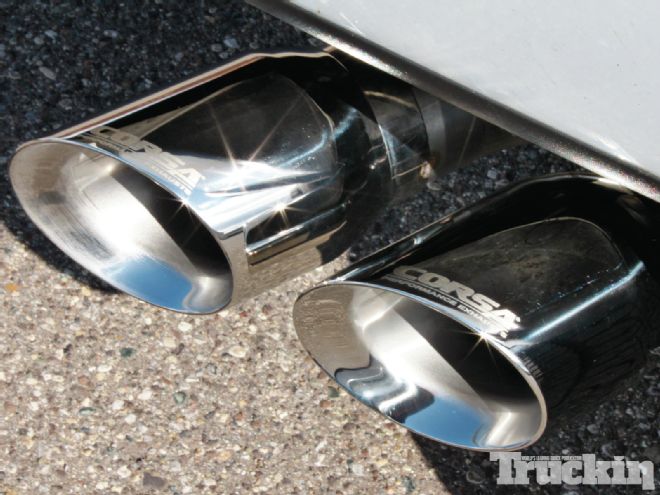
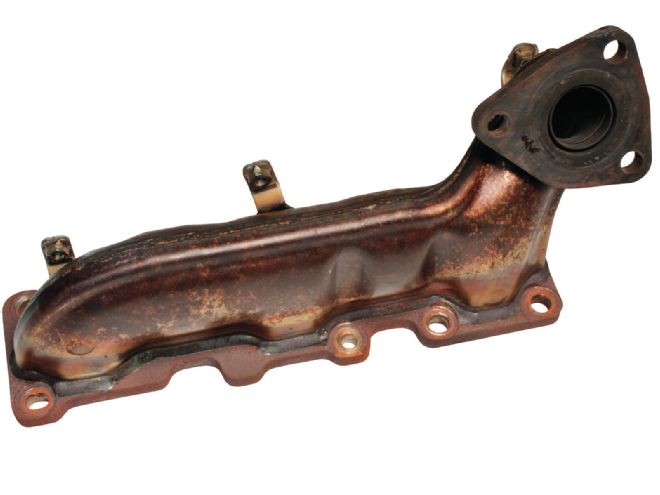

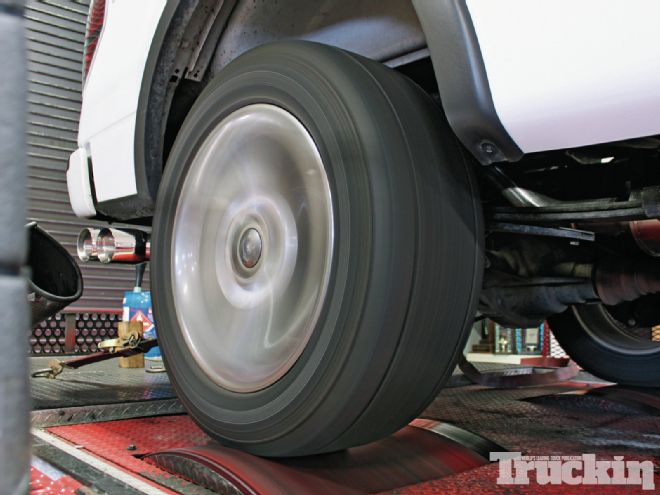
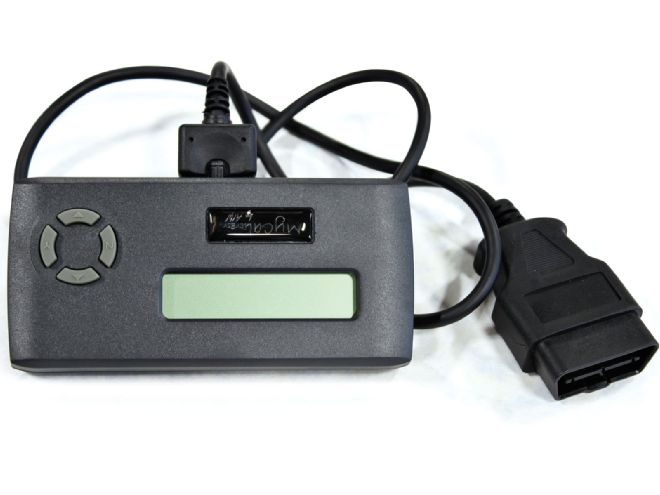

 | 13. Back on the chassis dyno, the Livernois tune and the CORSA exhaust combined for a best 372.98-rwhp output, with 427.14 lb-ft of torque. That's a 25 percent gain in horsepower and 21 percent more torque, when compared to the stock configuration of our SuperCrew 4x4 project vehicle. For the money—just under $2,000, including installation charges—the package represents great bang for the buck.
Dyno Results*
RWHP
RWTQ
Stock tune and exhaust
300.45
353.96
Stock tune with CORSA exhaust
312.58
366.56
Livernois Motorsports tune with stock exhaust
361.43
430.10
Livernois Motorsports tune with CORSA exhaust
372.98
427.14
DynoJet chassis dyno with SAE correction factory
| 13. Back on the chassis dyno, the Livernois tune and the CORSA exhaust combined for a best 372.98-rwhp output, with 427.14 lb-ft of torque. That's a 25 percent gain in horsepower and 21 percent more torque, when compared to the stock configuration of our SuperCrew 4x4 project vehicle. For the money—just under $2,000, including installation charges—the package represents great bang for the buck.
Dyno Results*
RWHP
RWTQ
Stock tune and exhaust
300.45
353.96
Stock tune with CORSA exhaust
312.58
366.56
Livernois Motorsports tune with stock exhaust
361.43
430.10
Livernois Motorsports tune with CORSA exhaust
372.98
427.14
DynoJet chassis dyno with SAE correction factory
 | ford F 150 engine
Turbocharger Tech
| ford F 150 engine
Turbocharger Tech